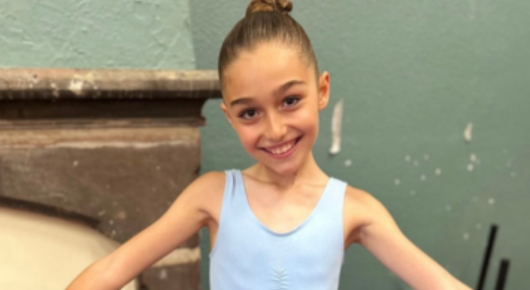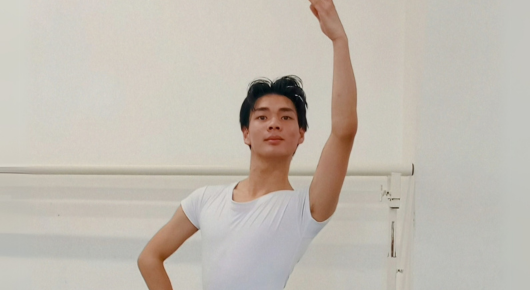8 March 2023
The ISTD’s Classical Indian Dance Faculty has now been an important part of the organisation for over 20 years. We caught up with our inspirational all-female committee, to find out more about their collective vision for the Classical Indian genres.
Tell us about your involvement with ISTD Classical Indian dance qualifications, examinations, or syllabi.
Chitraleka: I have been involved with the ISTD Classical Indian Dance Faculty idea since 1998, when there were meetings and consultations organised for developing the syllabus. I have been part of revising the syllabus in 2014/15.
I have been an examiner since 2000/2001 and was Faculty Chair for 7/8 years and am now one of the Lead Examiners for Bharatanatyam. As a participating dance centre, we have been sending over 100 candidates each year for examinations and currently have candidates registered for DDE teaching qualifications.
Kiran: I have been a committee member for around 20 years, teaching the Bharatanatyam syllabus since around 2000, and have been entering students for examinations ever since as well as being examiner since 2011.
Sujata: I’ve been involved with the faculty since its inception with original syllabus consultation, rewriting the syllabus and specification, committee member, examiner, and as Faculty Chair for over a decade.
Urja: I have been involved with the ISTD for almost a decade, initially as part of the Classical Indian Dance Faculty and then as an examiner. Along with fellow committee members and examiners I have worked on rewriting the syllabus as well as the content of the work.
Pushkala: I was privileged to be part of the consultative process before the faculty was formed and produced the first draft syllabus in Bharatanatyam for the steering group. I then served as Vice Chair of the faculty for several years and was active as a senior monitoring examiner. I have also written the syllabus for the DDE, DDI, and Licentiate qualifications for Bharatanatyam, and conducted the first DDI (now obsolete) and DDE exams in Bharatanatyam for our faculty. Teaching on-the-day courses for the faculty has also been part of my positive experiences.
"I want to be involved with the faculty as long as I can contribute to the development and popularisation of the art form."
What has been the best thing about being on the Classical Indian Faculty committee?
Chitraleka: It has been a place to meet with other inspired dance teachers with similar ambitions for the art and students of the art form, and to openly discuss ways to teach examine, and progress.
Kiran: Being involved in the progression of Classical Indian Dance for future generations, and being able to openly discuss all issues with fellow members.
Sujata: Learning from fellow members – laughing with them and also leading the Faculty.
Urja: It is great to be part of the committee and the best part is what I learn just being with the experienced people and how each one of us is different and brings uniqueness to the table. I am happy to be able to represent Indian classical dance within the larger dance sector.
Pushkala: Fellowship and involvement with the greater dance professional community through cross-faculty initiatives at the ISTD is a huge benefit. Continuous progress with improving syllabi or work practice and the input from colleagues keeps one fresh and relevant in one’s own thinking and practice.
"Our expansion outside of English borders – there are a few exams in Wales, Holland, Canada, USA, and UAE – should become a global reality as the diaspora is HUGE."
Do you have any particular aspirations for the future of the Faculty?
Chitraleka: I want to be involved with the faculty as long as I can contribute to the development and popularisation of the art form.
Kiran: To identify, train and appoint more examiners to meet the growing demands of teachers, especially those more available on weekends. Also, to lobby the appropriate authorities to enable teachers to take candidates out of school for dance exams on weekdays without penalty, so more sittings can be covered by current examiners. Also, to have more events outside of London to encourage teachers in other areas.
Sujata: To see many fully qualified teachers and the Classical Indian dance forms being taught as part of the regular school curriculum.
Urja: I want to see more young teachers becoming part of the faculty and bringing fresh new ideas. I would like the faculty to think internationally and how creatively we can bring strong and steady change.
Pushkala: As an examiner, it is so rewarding to see the improvement in standards across the board each year. Getting keen pupils to jump the hoops to pick up qualifications beyond the vocational, through university or young adulthood, will greatly enhance the growth of a cognisant dance community in our genres. Homegrown teachers will have the confidence to engage as professional teachers and the faculty needs to put energy into this to facilitate growth. Our expansion outside of English borders – there are a few exams in Wales, Holland, Canada, USA, and UAE – should become a global reality as the diaspora is HUGE.
Our Faculty
Sujata Banerjee MBE
Lead Examiner for Kathak
ISTD qualification level: Fellowship

Chitraleka Bolar
Lead Examiner for Bharatanatyam
ISTD qualification level: Fellowship

Pushkala Gopal MBE
ISTD Examiner for Bharatanatyam
ISTD qualification level: Fellowship

Nina Rajarani MBE
ISTD Examiner for Bharatanatyam
ISTD qualification level: Fellowship

Kiran Ratna
ISTD Examiner for Bharatanatyam
ISTD qualification level: Fellowship

Dr. Swati Raut
ISTD Examiner for Bharatanatyam
ISTD qualification level: Fellowship

Urja Desai Thakore
ISTD Examiner for Kathak
ISTD qualification level: Fellowship










